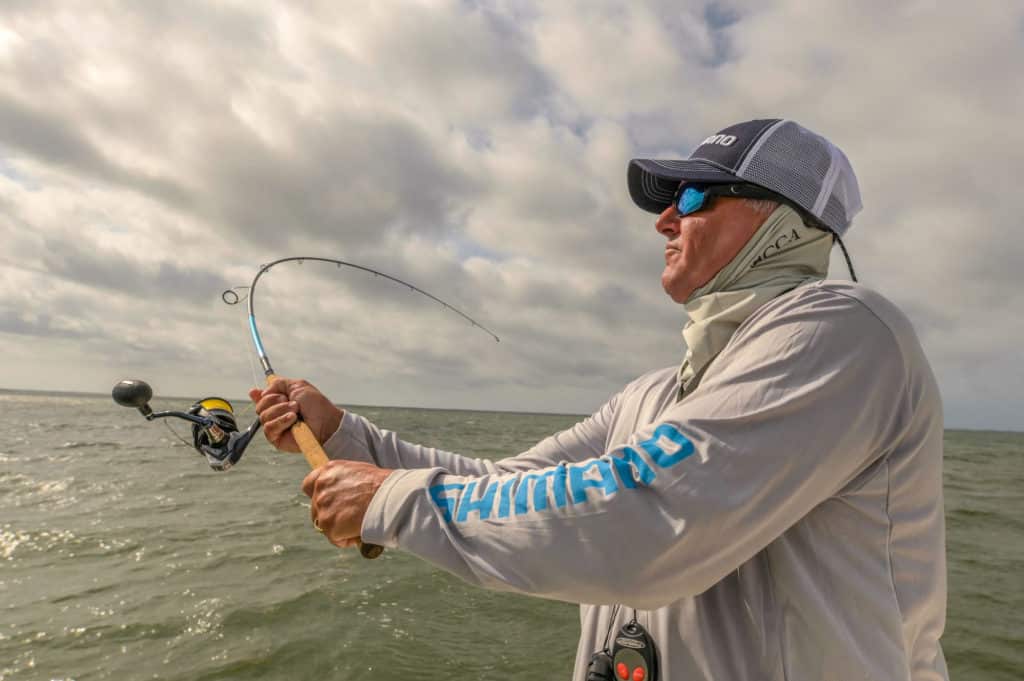
Few experienced anglers can spend enough time on the water to keep their casting accuracy and distance tack sharp. And with many new anglers entering the sport over the last two years, we decided to offer some tips on how to cast a spinning reel and how to cast baitcasters and conventional round-spool reels.
We checked in coast to coast with four inshore specialists and one offshore expert, and gathered their insights. Many had similar concepts about how to cast a fishing rod, whether spin, baitcast or conventional, though some had unique ideas and others provided advanced tips. Here are their thoughts in their own words:
Inshore
Shimano pro
Tampa, Florida
With spin tackle, try this variety of casts and techniques:
Dart Cast: A short, compact casting motion that starts at 1 o’clock and stops at 11 o’clock abruptly, then follow the lure with the rod tip. This allows for pinpoint accuracy on medium to long casts to fish or cover. It’s the most important cast you should master, if you love swinging artificial lures.
Pitch or Pendulum Cast: A must for close-quarters casting and very handy for fishing marshy zones or around cover like docks and mangrove edges. I like to hold my lure with a length of line that puts it even with the spinning reel. Then pendulum swing the lure smoothly at a low angle to the target area—generally within 15 to 20 feet of your position.
Feathering Line: This not only gives you greater casting accuracy but reduces wind knots in a big way. When casting, just use your index finger gently to feather or slow the line down especially before the lure hits the intended landing zone. This reduces the surface impact from the lure’s entry and places the lure in the strike zone efficiently.
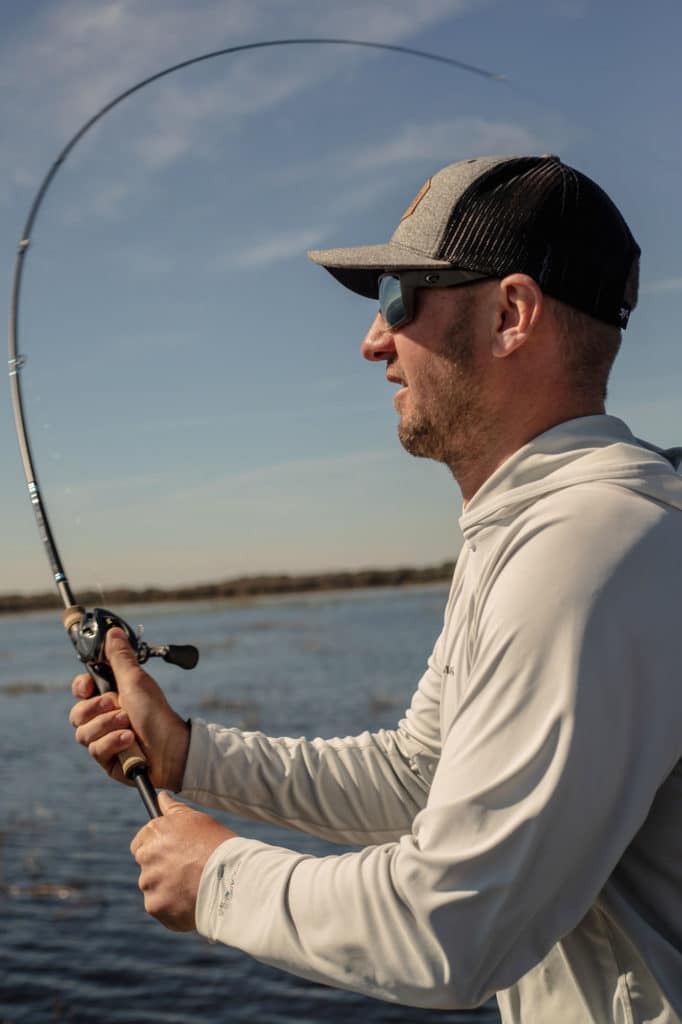
With baitcasters, here are some tips for better casting:
Lure-to-Rod Balance: Know the sweet spot of your casting rod. The lure-weight spec of your rod is important. Try to choose a lure that accommodates the mid-range of that lure-weight spec. For example, if the lure-weight range is ¼ to 5/8 ounces, find a lure for that rod that weighs 3/8 to ½ ounces, and you’re in the sweet spot. You’ll get your best performance out of that rod with those lures.
Understand Rod Actions for Specific Techniques: If you’re fishing cover like mangrove shorelines or docks, then medium-heavy to heavy actions are best.
Topwater plugs are typically heavy by nature so a heavier-action rod is required to cast these lures accurately and efficiently. But you still need a moderate-fast tip to walk the bait properly.
When fishing suspending treble-hook lures, you need to choose medium-action rods with fast tips to generate good hook sets but still allow for some forgiveness when it comes to pulling the hooks.
Smart Casting: Place your lure in a landing zone that doesn’t alert the targeted fish. Then work or manipulate the lure into the strike zone.
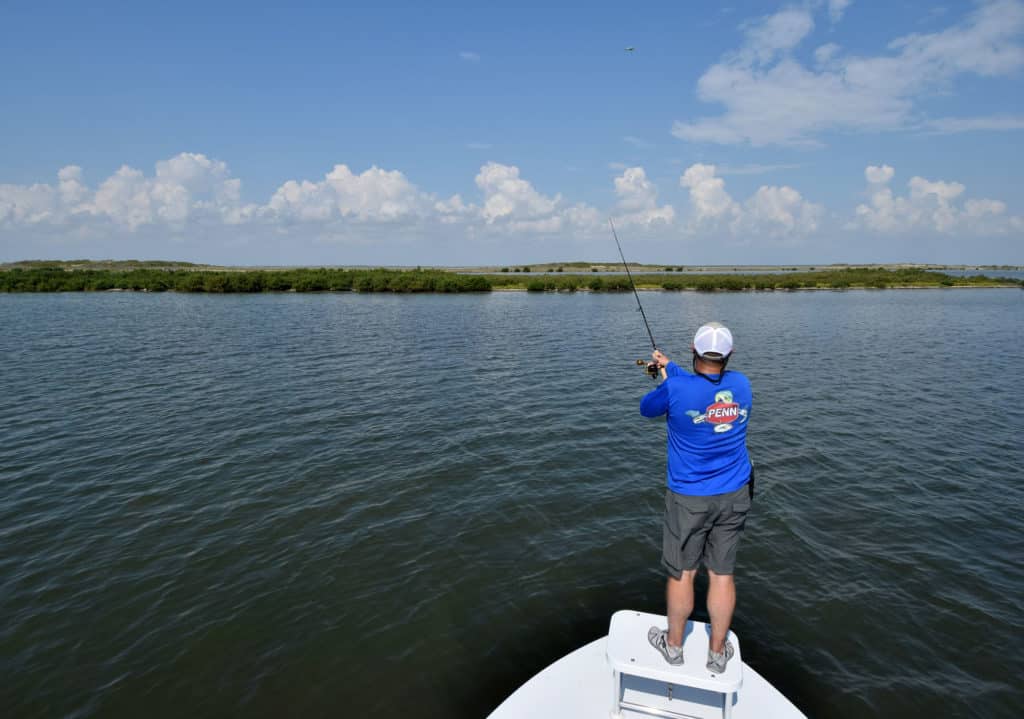
Penn pro
Wrightsville Beach, NC
Sometimes distance can be as important as accuracy and sometimes even more important. Distance casting will help you cover more area and also get a lure to a fish that might be easily spooked. If you cover more area you’ll catch more fish.
But how do you get more distance? One mistake I see many anglers make is trying to use just one hand to cast spinning tackle. Your accuracy and distance will greatly improve by using two hands to cast spinning tackle.
I hold the reel seat part of the combo with my dominant hand. I grab the line with my pointer finger and open the bail, just like on any other cast. I hold the bottom section of the rod butt with my other hand. My dominant hand controls where I cast the lure. My other hand—on the rod butt—is the power behind the cast.
The real challenge of power casting is timing. Knowing when to let go of the line with your finger and release the lure. If the lure slams into the water, you let go too late. If the lure flies high in the air and falls, you let go too early.
And one final tip I can give you for power casting: I’m usually a 7-foot rod guy for general types of all-around inshore fishing. I do appreciate a Fenwick HMG Inshore 7-foot-6-inch medium-action rod when casting topwater lures, especially trying to achieve greater distance with my casts.
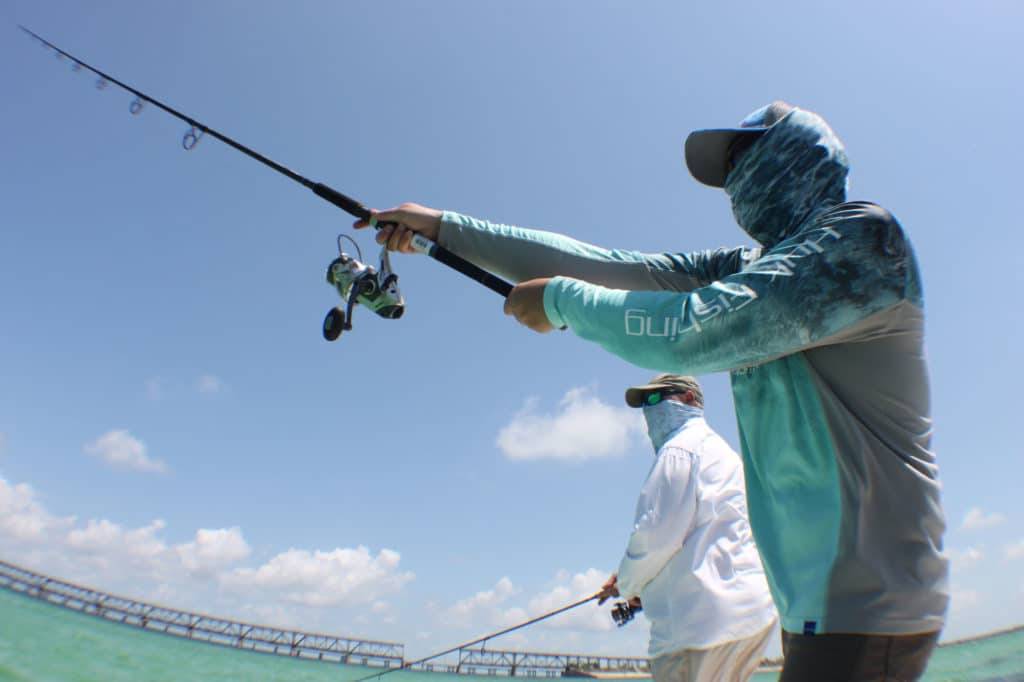
Okuma pro
Tampa, Florida
Baitcaster backlashes are merely a side effect of being new to a reel. Have patience and give yourself time to practice. With proper control and subtle adjustments to a baitcaster, you can tune your reel to avoid the bird’s nests.
The cast control mechanism, the spool tension knob, and the reel-brake system can all be fine-tuned. The brake system allows you to adjust the speed of the spool rotation, giving you a considerable amount of control over line tension.
You will have to tune your reel settings to each lure you’re using, as the different weights will require their unique settings.
Start with the brake system and the tension knob. Adjusting these pieces controls the velocity of the lure. Ideally, you should be able to freespool your reel, and the bait should fall to the ground without backlash. If you can accomplish that, then you should not get any backlash when you cast. Make adjustments until you reach the desired speed.
Now do some test casts. Do a simple overhead cast, and feel out the distance, adjust the brake accordingly. Eventually, you can begin to loosen the brake a bit and control the spool with your thumb. Start practicing with a heavier fishing lure for an easier time.
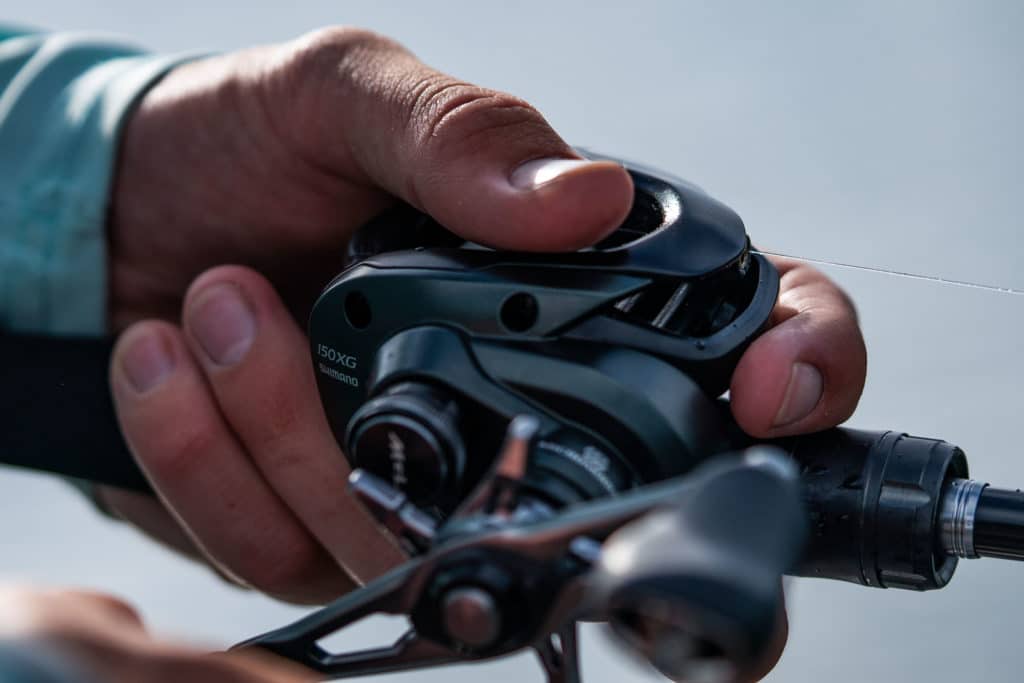
Okuma pro
Sebastian, Florida
Not only does skipping a lure across the water with a spinning rod look awesome but it’s also very beneficial for getting into tight spaces. Inshore game fish love structure and shade, which is commonly provided by docks and mangroves. These lure traps can be quite challenging to access with a traditional overhand cast. This is where skipping comes into play.
Like anything, it will take some practice but it’s a lot easier than most people think and a lot like skipping a rock across water. Much like rocks, the shape and size of the lure is crucial—a smooth surface is the key. Anything with a bill or lip is going to give you problems much like a jagged rock would. I recommend topwater lures and soft plastics.
Think of your rod like a hockey stick and the lure is a puck. If you’re familiar with a wrist shot, it’s very similar. (You create momentum before releasing with a wrist shot). It all happens parallel to the water.
Pick your target and then draw a visual line. Now create a little momentum going back with your rod parallel to the water with your bail open, line on your pointer finger and take your shot. It won’t have the power to travel far at first, but the more you get comfortable, the more speed and distance you can incorporate. You’ll soon realize you don’t need as much force as you need a smooth confident motion. Once you get the hang of it, you’ll realize this technique is more essential to catching fish than it is flashy.
Ben Secrest demonstrating a long offshore cast with a conventional reel. Courtesy Ben Secrest / Accurate Fishing
Offshore
Accurate Fishing
Corona, California
Casting, in general, can be a difficult feat for any angler—beginner to best. Casting into a head wind is always challenging as is casting conventional tackle, especially when the pressure is on.
One thing I have learned to date is that I will never know it all, and keeping my ears open and mouth shut help my fishing every trip.
When casting conventional gear, it is key to learn as much about your reel as possible. Be able to adjust the reel so you maximize your cast but also minimize any backlashes. Most reels have a tension mechanism that controls the speed of the spool. One easy adjustment to do is to put the lure or bait on the line with the tension knob tightened and slowly loosen it until the lure or bait slowly falls to the water.
An even slow fall is what you’re looking for to slow the initial startup speed of the spool when you’re casting. This will alleviate the loops created by the spool spinning faster than your thumb can regulate. This is an easy step to take and will help your frustration level for sure.
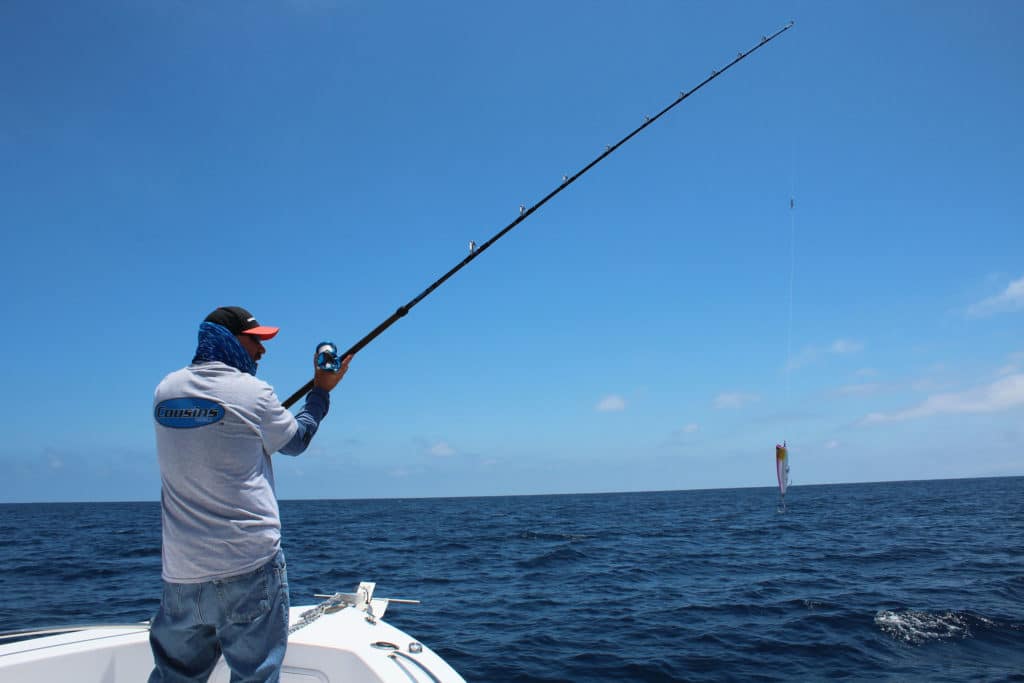
Another tip to help with both conventional and spinning tackle is to make sure your line is tightly spooled on the reel. Casting loosely wound braid can cause very nasty backlashes.
One thing to do when you get on the boat is put the line in the water behind the boat, away from the prop and let it out until it seems tight on the spool. Let out no more than a third of the spool generally, and evenly wind it back on the reel. This does two things: tightens your line on the spool and wets the line, making it easier to cast.
Read Next: Pros’ Tips for Sight-Casting to Cobia
A big problem I frequently see involves using leaders with large knots going through the guides. This will cause you problems, especially when casting to feeding fish. You cast the lure, and the knot hits a guide, throwing a loop, causing a backlash. The bait stops mid-air after the line tightens because of the backlash, and then a monster eats the bait, resulting in a Zing-Pow moment.
Make shorter leaders with the knot outside the rod tip. Braid is tough enough to cast, so get your knots situated. (Check out the FG knot or Pena Knot—both are low profile and cast easily through guides once they’re cinched.)
Additional Tips:
- Position your boat upwind of the target for easier more effective casting.
- When fishing artificial baits that twist on retrieve, use a small swivel to attach the leader to avoid line twist, which will cause wind knots.
- Learn to follow through with your cast like throwing a ball. Jerking actions cause backlashes. Practice makes perfect so go to the park, or get on the water and cast.








